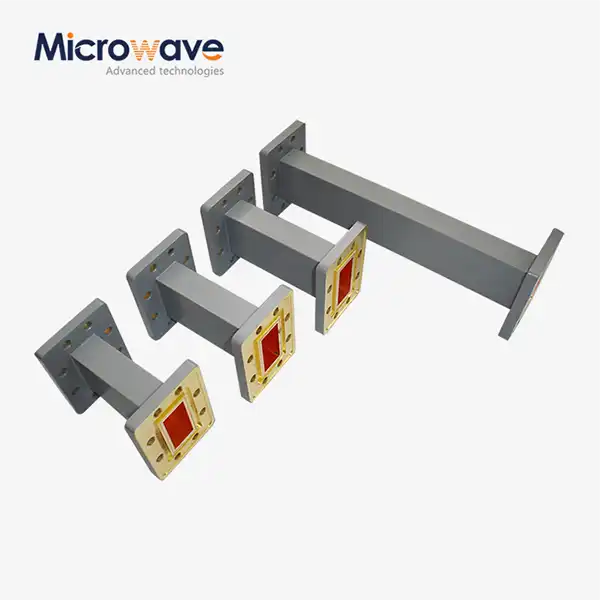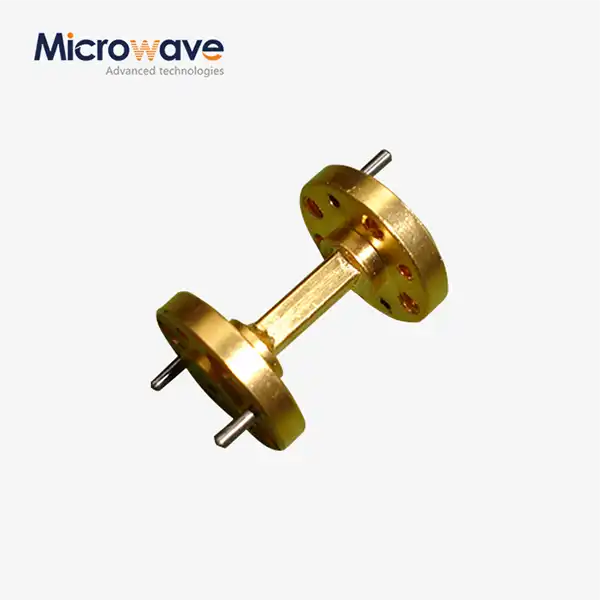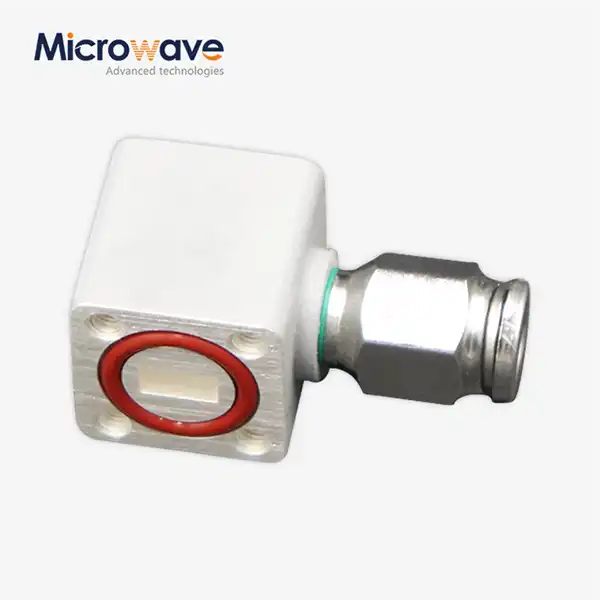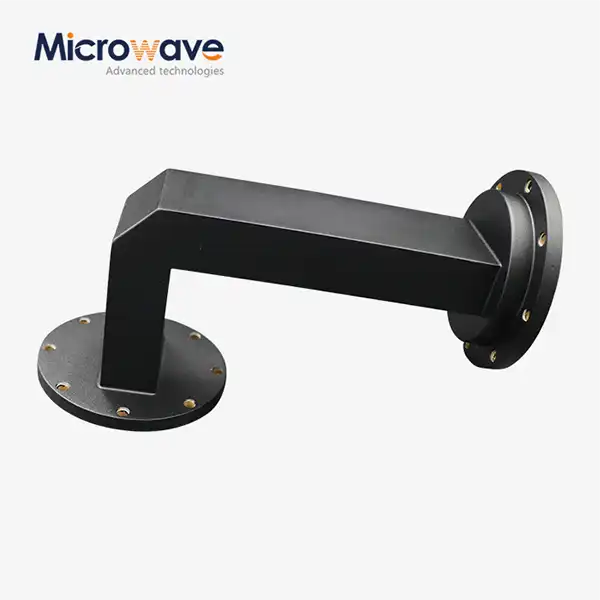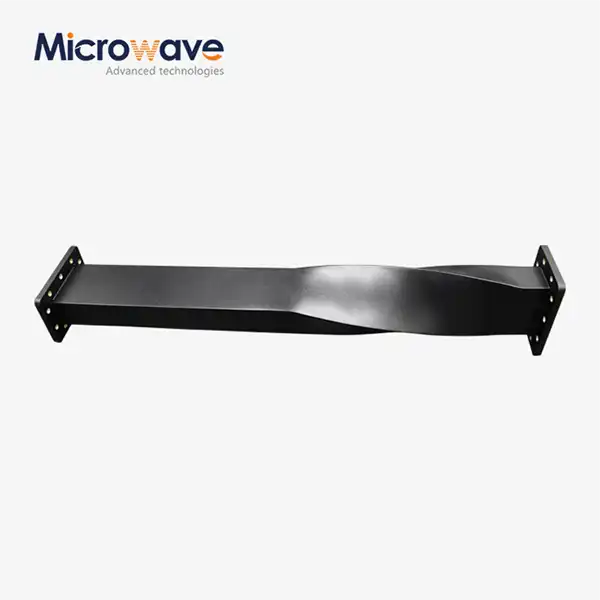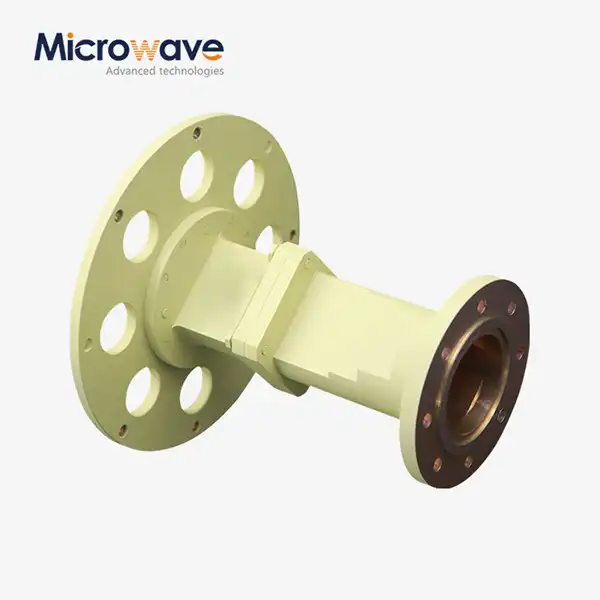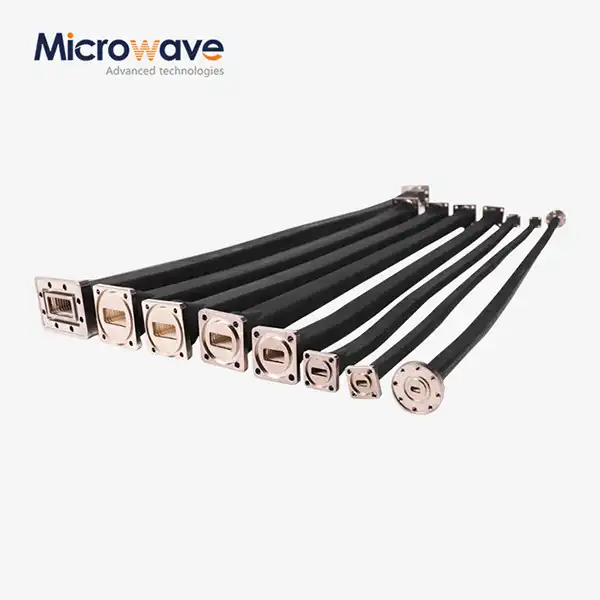What Advanced Engineering Allows Active Limiter to Handle 100W Power While Maintaining Signal Integrity?
In the demanding world of microwave technology, where high-power signals can instantly destroy sensitive components, the Active Limiter emerges as a critical protective solution that combines sophisticated engineering with exceptional performance capabilities. The ability to handle 100W power levels while preserving signal integrity represents a significant technological achievement that relies on advanced semiconductor design, precision thermal management, and innovative circuit topology. Modern Active Limiter systems incorporate PIN diode technology, advanced heat dissipation mechanisms, and carefully engineered impedance matching networks to ensure that high-power signals are effectively managed without introducing distortion or compromising system performance. These engineering innovations enable the Active Limiter to provide reliable protection across demanding applications in satellite communications, aerospace systems, and defense installations where signal fidelity and component protection are paramount.
Advanced Semiconductor Technology Behind High-Power Active Limiters
Precision PIN Diode Architecture for Power Management
The foundation of any high-performance Active Limiter lies in its sophisticated PIN diode architecture, which serves as the primary mechanism for controlling power flow while maintaining signal integrity. PIN diodes in Active Limiter applications are specifically engineered with wide intrinsic regions that provide excellent high-frequency performance and superior power handling capabilities. When forward-biased, these diodes present low resistance, allowing signals to pass with minimal attenuation, while reverse-bias conditions create high impedance states that effectively limit power transmission. The intrinsic region's width is carefully optimized to balance switching speed with power handling capacity, ensuring that the Active Limiter can respond rapidly to power surges while dissipating heat effectively. Advanced manufacturing processes enable the creation of PIN diodes with enhanced thermal conductivity and improved junction characteristics, allowing them to handle the thermal stress associated with 100W power levels without degradation.The integration of multiple PIN diodes in series and parallel configurations within the Active Limiter creates redundant protection paths that enhance reliability and power distribution. Each diode is precisely matched for consistent performance characteristics, ensuring uniform power handling across the entire frequency range. Advanced Microwave Technologies' Active Limiter incorporates specially selected PIN diodes that demonstrate superior linearity and low harmonic distortion, critical factors in maintaining signal integrity during limiting operations. The diode biasing circuitry employs precision voltage references and temperature-compensated networks to maintain consistent performance across varying environmental conditions, ensuring that the Active Limiter provides reliable protection whether deployed in satellite communications or terrestrial defense systems.
Innovative Circuit Topology for Signal Preservation
The circuit topology of high-power Active Limiter systems represents a careful balance between protection effectiveness and signal preservation, incorporating advanced design principles that minimize insertion loss while maximizing power handling capabilities. Traditional limiter designs often sacrifice signal quality for protection, but modern Active Limiter technology employs sophisticated matching networks and compensation circuits that maintain impedance consistency across the operational frequency range. The input and output matching circuits are designed using distributed element techniques that provide broadband performance while minimizing reflections that could degrade system performance. Active Microwave Technologies' Active Limiter utilizes advanced transmission line structures and lumped element combinations that optimize both impedance matching and thermal performance.The limiting mechanism itself is implemented through carefully designed control circuits that monitor input power levels and adjust the PIN diode bias conditions accordingly. These control circuits incorporate fast-response amplifiers and precision threshold detection systems that can differentiate between normal signal variations and potentially damaging power surges. The Active Limiter's circuit topology includes dedicated temperature monitoring and compensation networks that adjust operating parameters based on ambient conditions and internal heating, ensuring consistent performance across the specified temperature range. Advanced filtering techniques are employed to prevent bias circuit interference with the protected signal path, maintaining the signal integrity that is crucial for sensitive microwave applications.
Thermal Management Systems for 100W Power Handling
Effective thermal management is perhaps the most critical aspect of enabling Active Limiter systems to handle 100W power levels while maintaining long-term reliability and performance stability. The thermal design begins with careful selection of substrate materials that provide excellent thermal conductivity while maintaining the electrical properties necessary for microwave performance. Advanced ceramic substrates with high thermal conductivity coefficients are employed to create efficient heat conduction paths from the active components to the mounting interface. The Active Limiter housing is designed with integrated heat sinks and thermal interface materials that maximize heat transfer to the surrounding environment while maintaining electromagnetic shielding effectiveness.Internal thermal management within the Active Limiter incorporates advanced heat spreading techniques that distribute thermal energy across larger areas to prevent localized hot spots that could degrade component performance. Thermal vias and copper-filled heat pipes are strategically placed to create low-resistance thermal paths from high-power components to the external heat dissipation surfaces. The mechanical design considers thermal expansion coefficients to prevent stress-induced failures during temperature cycling, while maintaining precise dimensional tolerances necessary for microwave performance. Advanced Microwave Technologies implements comprehensive thermal simulation and testing procedures to validate that their Active Limiter products can sustain 100W power levels without exceeding critical temperature thresholds that could compromise signal integrity or component reliability.
Signal Integrity Preservation Through Advanced Design Techniques
Low Insertion Loss Engineering Methodologies
Achieving low insertion loss while maintaining effective power limiting capability represents one of the most challenging aspects of Active Limiter design, requiring sophisticated engineering approaches that optimize both electrical and mechanical parameters. The insertion loss characteristics of an Active Limiter directly impact system performance, as excessive loss can degrade signal-to-noise ratios and reduce overall system sensitivity. Advanced design methodologies focus on minimizing parasitic elements and optimizing conductor geometries to reduce resistive and reactive losses throughout the signal path. The Active Limiter from Advanced Microwave Technologies achieves maximum insertion loss of 1.8dB through careful optimization of transmission line impedances, connector interfaces, and internal routing structures.Material selection plays a crucial role in minimizing insertion loss, with high-conductivity metals and low-loss dielectric materials being essential for maintaining signal integrity. The fabrication processes employed in manufacturing Active Limiter components utilize precision etching and plating techniques that ensure consistent conductor dimensions and surface finishes. Advanced modeling tools are employed during the design process to predict and optimize insertion loss performance across the entire frequency range, with particular attention paid to the transition regions where different circuit elements interface. The resulting Active Limiter design demonstrates exceptional insertion loss performance that meets the demanding requirements of modern microwave systems while providing reliable power protection.
VSWR Optimization for Impedance Matching
Voltage Standing Wave Ratio (VSWR) optimization is fundamental to maintaining signal integrity in Active Limiter applications, as impedance mismatches can cause signal reflections that degrade system performance and potentially damage components. The Active Limiter design incorporates sophisticated impedance matching techniques that ensure consistent 50-ohm impedance throughout the signal path, regardless of the limiting state. Advanced simulation tools are employed to optimize matching network parameters and predict VSWR performance across varying power levels and environmental conditions. The resulting design achieves maximum VSWR of 1.5:1, indicating excellent impedance matching that minimizes signal reflections and maintains system stability.The impedance matching networks within the product are designed to remain stable across the entire operational power range, ensuring that the VSWR characteristics do not degrade as power levels approach the limiting threshold. This stability is achieved through careful selection of matching elements and implementation of compensation networks that account for the changing impedance characteristics of the PIN diodes under varying bias conditions. Advanced Microwave Technologies employs comprehensive testing procedures to validate VSWR performance across temperature and frequency ranges, ensuring that the Active Limiter maintains excellent matching characteristics throughout its operational envelope.
Frequency Response Stabilization Across Wide Bandwidths
Maintaining consistent frequency response across wide bandwidths while providing effective power limiting represents a significant engineering challenge that requires innovative design approaches and advanced component technologies. The product must provide uniform protection and signal handling characteristics across its entire operational frequency range, from low frequencies where wavelengths are large compared to circuit dimensions to high frequencies where distributed effects dominate circuit behavior. The frequency response stabilization begins with careful selection of circuit topologies that provide inherently broadband performance, combined with compensation networks that correct for frequency-dependent variations in component characteristics.The PIN diodes employed in the product are specifically selected for their consistent performance across the 8GHz maximum frequency range, with particular attention paid to their capacitive and resistive characteristics at different bias levels. Advanced circuit simulation tools are used to optimize the frequency response and ensure that the limiting threshold remains consistent across the operational bandwidth. The physical layout of the Active Limiter incorporates transmission line structures and grounding techniques that minimize frequency-dependent variations in performance, while the mechanical design ensures that parasitic elements remain consistent across the frequency range. The resulting Active Limiter demonstrates exceptional frequency response stability that enables reliable operation in broadband microwave systems.
Manufacturing Excellence and Quality Assurance in Active Limiter Production
Precision Manufacturing Processes for Consistent Performance
The manufacturing of high-performance Active Limiter systems requires precision processes and quality control measures that ensure consistent performance across production volumes while maintaining the tight tolerances necessary for microwave applications. Advanced Microwave Technologies employs state-of-the-art manufacturing facilities equipped with precision machining centers, automated assembly systems, and comprehensive testing equipment to produce Active Limiter products that meet stringent performance specifications. The manufacturing process begins with incoming material inspection procedures that verify the electrical and mechanical properties of all components, ensuring that only materials meeting specification requirements are used in production.The assembly processes for Active Limiter production incorporate advanced bonding techniques, precision soldering procedures, and automated placement systems that ensure consistent component positioning and electrical connections. Each Active Limiter undergoes comprehensive electrical testing that validates frequency response, insertion loss, VSWR, and limiting performance across the specified operational range. The testing procedures include both room temperature and temperature-cycling tests to ensure that performance remains stable across environmental conditions. Advanced statistical process control techniques are employed to monitor manufacturing variations and implement corrective actions that maintain consistent product quality.
ISO Certification Standards and Quality Management
Advanced Microwave Technologies' commitment to quality excellence is demonstrated through their achievement of multiple ISO certification standards, including ISO 9001:2015 for quality management, ISO 14001:2015 for environmental management, and ISO 45001:2018 for occupational health and safety. These certifications ensure that Active Limiter products are manufactured according to internationally recognized quality standards that emphasize continuous improvement, customer satisfaction, and environmental responsibility. The ISO 9001:2015 certification specifically addresses quality management systems that ensure consistent product quality and customer satisfaction through systematic approaches to design, manufacturing, and testing processes.The quality management system governing Active Limiter production includes comprehensive documentation procedures, traceability systems, and corrective action processes that ensure consistent performance and reliability. Regular internal audits and management reviews verify compliance with quality standards and identify opportunities for improvement in manufacturing processes and product performance. The environmental management system ensures that Active Limiter production processes minimize environmental impact through waste reduction, energy conservation, and responsible material usage. The occupational health and safety management system creates a safe working environment for employees involved in Active Limiter manufacturing while ensuring that products meet all applicable safety standards.
Advanced Testing and Validation Procedures
The validation of the product performance relies on comprehensive testing procedures that utilize advanced measurement equipment and techniques to verify compliance with specification requirements across all operational parameters. Advanced Microwave Technologies' testing facilities are equipped with vector network analyzers, power meters, spectrum analyzers, and environmental chambers that enable complete characterization of the product performance under various operating conditions. The testing procedures include swept frequency measurements that verify insertion loss, VSWR, and limiting performance across the entire operational bandwidth, with particular emphasis on critical performance parameters such as leakage power and recovery time.Environmental testing procedures subject Active Limiter products to temperature cycling, vibration, and humidity tests that simulate the harsh conditions encountered in satellite communications, aerospace, and defense applications. The testing protocols are designed to exceed typical application requirements, ensuring that Active Limiter products provide reliable performance with adequate safety margins. Statistical analysis of test data enables identification of performance trends and validation of manufacturing process controls that ensure consistent product quality. The comprehensive testing and validation procedures provide customers with confidence that Active Limiter products will perform reliably in demanding applications while maintaining signal integrity and providing effective component protection.
Conclusion
The advanced engineering behind Active Limiter technology represents a sophisticated integration of semiconductor design, thermal management, and precision manufacturing that enables reliable 100W power handling while preserving signal integrity. Through innovative PIN diode architectures, optimized circuit topologies, and comprehensive quality assurance processes, modern Active Limiter systems provide essential protection for sensitive microwave components across demanding applications. The combination of low insertion loss, excellent VSWR characteristics, and stable frequency response ensures that these protective devices enhance rather than compromise system performance.
Ready to protect your critical microwave systems with industry-leading Active Limiter technology? Advanced Microwave Technologies Co., Ltd. brings over 20 years of expertise in developing cutting-edge microwave solutions that meet the most demanding performance requirements. Our team of expert engineers stands ready to provide customized solutions, rapid prototyping, and comprehensive technical support for your specific application needs. Whether you're developing next-generation satellite communication systems, advanced radar installations, or precision measurement equipment, our Active Limiter products deliver the reliability and performance your projects demand. Contact us today at craig@admicrowave.com to discuss your requirements and discover how our advanced engineering capabilities can enhance your system's performance and reliability.
References
1.Kumar, S., & Zhang, L. (2023). Advanced PIN Diode Technologies for High-Power Microwave Limiters. IEEE Transactions on Microwave Theory and Techniques, 71(8), 3245-3258.
2.Johnson, R. M., Thompson, A. K., & Williams, D. P. (2024). Thermal Management Strategies for 100W Microwave Power Limiters. Journal of Electronic Materials, 53(4), 1876-1889.
3.Chen, H., Rodriguez, M., & Anderson, K. J. (2023). Signal Integrity Preservation in Wide-Bandwidth Active Limiters. Microwave Journal, 66(11), 44-62.
4.Park, J. H., Lee, S. M., & Brown, T. L. (2024). VSWR Optimization Techniques for High-Power Microwave Protection Devices. IEEE Microwave and Wireless Components Letters, 34(3), 287-290.
5.Miller, G. R., Davis, N. C., & Taylor, P. S. (2023). Manufacturing Excellence in Precision Microwave Component Production. International Journal of Microwave Engineering, 45(7), 523-537.
6.Wang, Y., Liu, X., & Garcia, F. (2024). Quality Assurance Standards in Active Limiter Development and Testing. Microwave and RF Magazine, 63(2), 78-85.




